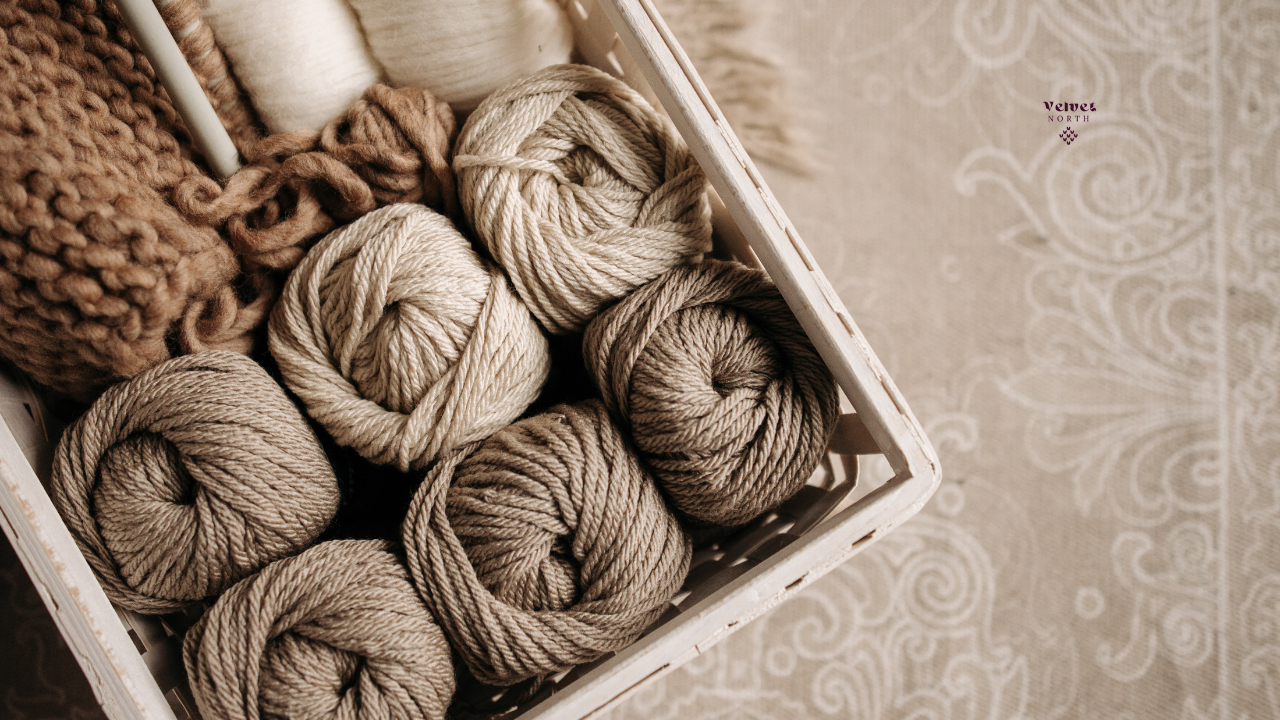- June 22, 2023
- Velvet North
- 0 Comments
- Knitting guides
Yarn weight plays a significant role in determining the thickness and density of the yarn, as well as the overall yardage needed for a knitting project. By familiarizing yourself with different yarn weight classifications, you can make informed decisions when selecting yarn and accurately estimate the amount of yarn required for your projects. Let’s explore the most common yarn weight categories and gain a general understanding of the yardage expectations for each.
Table of Contents
ToggleLaceweight:
Laceweight yarn is the finest and thinnest category. It is often used for delicate lace patterns or lightweight accessories. Due to its thinness, laceweight yarn typically has high yardage per weight. On average, laceweight yarn may have yardage ranging from 400 to 1000 yards (366 to 914 meters) per 100 grams.
Fingering/Sock:
Fingering or sock weight yarn is slightly thicker than laceweight and is popular for knitting socks, shawls, and lightweight garments. It offers a good balance between delicacy and versatility. Fingering yarn typically has yardage ranging from 350 to 450 yards (320 to 411 meters) per 100 grams.
Sport/DK:
Sport and DK (Double Knitting) weight yarns are often used for a variety of projects, including sweaters, baby garments, and accessories. They are slightly thicker than fingering weight but still lightweight. Sport and DK yarns generally have yardage ranging from 250 to 350 yards (229 to 320 meters) per 100 grams.
Worsted/Aran:
Worsted weight yarn, also known as aran weight, is a versatile yarn category commonly used for a wide range of projects, such as hats, scarves, and blankets. It offers good stitch definition and is often considered a standard weight for many patterns. Worsted weight yarn typically has yardage ranging from 180 to 220 yards (165 to 201 meters) per 100 grams.
Bulky/Chunky:
Bulky or chunky weight yarns are thick and quick to knit, making them ideal for cozy winter accessories, warm sweaters, and home décor items. They provide excellent insulation and a substantial feel to finished projects. Bulky weight yarn generally has yardage ranging from 100 to 150 yards (91 to 137 meters) per 100 grams.
Super Bulky:
Super bulky weight yarn is the thickest and heaviest category, perfect for creating warm and bulky garments, blankets, and accessories. Projects made with super bulky yarn knit up quickly due to their large stitches. Super bulky yarns usually have yardage ranging from 60 to 90 yards (55 to 82 meters) per 100 grams.
It’s important to note that these yardage ranges are approximate and can vary depending on the fiber content and specific yarn brand. It’s always a good idea to check the yarn label for accurate yardage information.
By understanding the general yardage expectations for each yarn weight category, you can estimate the amount of yarn needed for your projects more effectively. Keep in mind that the yardage requirements can vary based on the pattern’s stitch count, size, and design features. It’s advisable to consult the pattern instructions and make adjustments as necessary to ensure you have enough yarn to complete your project. Read my quide how to master yarn calculations.


